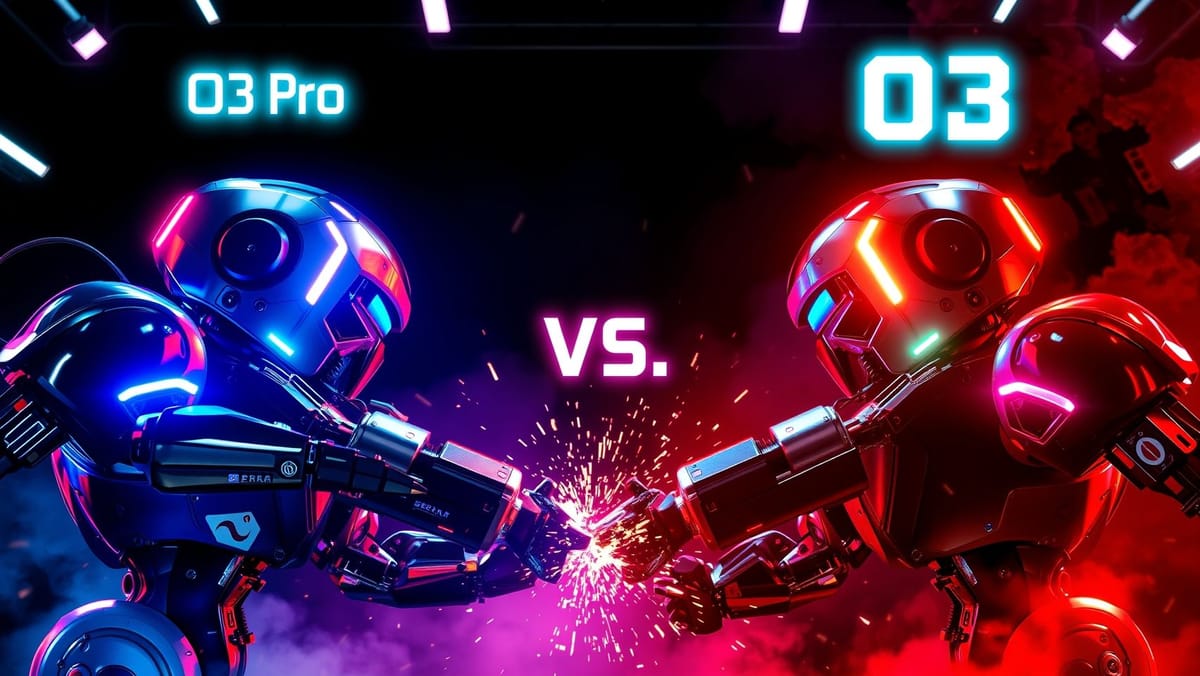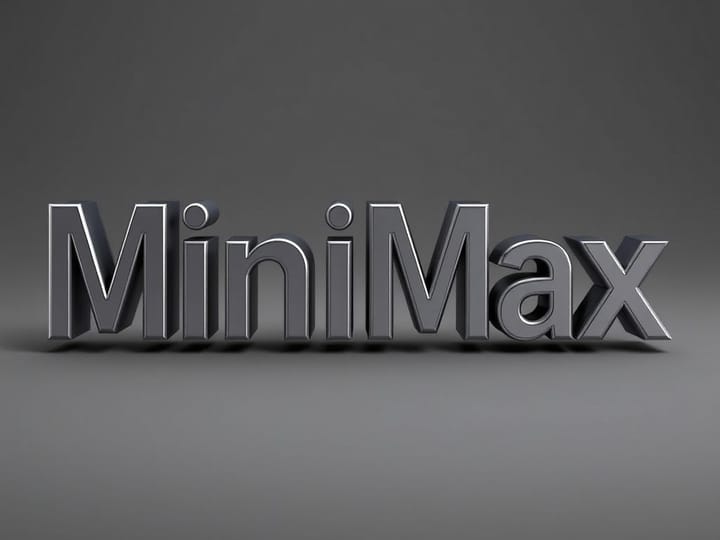O3 Pro vs O3
Break down O3 Pro vs O3 on every dimension that matters to learners: reliability, speed, cost per million tokens, context length, tool access, and use-case fit

Artificial-intelligence models evolve fast, and nothing illustrates that better than OpenAI’s O-series. In April 2025 the company launched O3, its most advanced reasoning engine to date. Two months later, a premium variant called O3 Pro arrived, promising even deeper thinking—provided you can wait a little longer and pay a little more. For students deciding which model to rely on for coursework, research or coding projects, the choice is no longer obvious.
This in-depth guide breaks down O3 Pro vs O3 on every dimension that matters to learners: reliability, speed, cost per million tokens, context length, tool access, and use-case fit. All data points are drawn from OpenAI’s official release notes and pricing pages plus independent benchmark aggregators, so you can trust the numbers.
1. Quick-Glance Comparison Table
| Feature | O3 | O3 Pro |
|---|---|---|
| Release date | 16 Apr 2025 | 10 Jun 2025 |
| API price (USD) | $2 in / $8 out per 1M tokens | $20 in / $80 out per 1M tokens |
| Context window | 200 k tokens (100 k max output) | 200 k tokens (100 k max output) |
| Average latency | ~38 s TTFT | ~130 s TTFT |
| Tokens/sec | ~45 tps | ~21 tps |
| Reliability (“4/4” eval) | Baseline | Highest among O-series |
| Tool access | Browsing, Python, File Analysis, Vision | Same tools; no image generation; Canvas & temp chats disabled |
| ChatGPT limits (Plus/Team) | 100 msgs / week | Replaces legacy O1-Pro on Pro & Team (no weekly cap) |
| Ideal for | Everyday study, quick drafts, vision questions | High-stakes research, lengthy code review, STEM problem-sets |
2. What Exactly Are O3 and O3 Pro?
O3 is OpenAI’s flagship reasoning model, tuned to tackle multi-step problems across coding, math, science and visual analysis. It can “think with images,” run Python code, search the web and interpret PDFs right inside ChatGPT. On benchmarks like MMMU and Codeforces, it beats older GPT-4 flavors by large margins.
O3 Pro is not a brand-new neural network—it is the same O3 architecture run with more compute per query, allowing it to deliberate longer and reduce errors. OpenAI’s internal “4/4 reliability” test (the model must answer correctly four times in a row) shows O3 Pro outperforming both O3 and the retired O1-Pro in every domain measured, especially STEM and writing.
Plain-English takeaway: O3 Pro is the careful, detail-oriented sibling; O3 is the faster, budget-friendly one.
3. Performance & Reliability
- Accuracy bump. In expert reviews, students preferred O3 Pro answers for clarity and completeness ~68 % of the time.
- Fewer hallucinations—but not zero. Early testers on InfoQ still report stray fabrications, although noticeably less than base O3.
- Consistency matters for marks. If you’re submitting a 3,000-word lab report and cannot afford a false citation, O3 Pro’s slower but steadier reasoning pays off.
4. Speed & Latency
| Metric | O3 | O3 Pro |
|---|---|---|
| First token (median) | ~7 s | ~22 s |
| Output tokens per second | 45 | 21 |
| User rating (Reddit) | “snappy” | “times out in Mac app”infoq.com |
Speed differences stem from tool usage. O3 Pro often calls the Python sandbox, web search and file interpreters behind the scenes. Those steps add seconds, but they’re also why its answers read like mini-essays with citations.
Tip: For a last-minute 150-word forum reply, stick to O3. For a literature-review table that must cite ten papers, schedule O3 Pro and grab a coffee.
5. Cost Breakdown
5.1 API Pricing (June 2025)
| Model | Input / 1M | Output / 1M | Cost ratio vs O3 |
|---|---|---|---|
| O3 | $2 | $8 | 1× baseline |
| O3 Pro | $20 | $80 | 10× higher |
| GPT-4o | $5 | $20 | 2.5× |
| O4-mini | $1.1 | $4.4 | 0.55× |
Student budget hack: Draft in O4-mini, then run a final “polish & verify” pass in O3 Pro on just the conclusion section—reducing total spend by ~70 %.
5.2 ChatGPT Subscription Angle
- Plus & Team plans: 100 O3 messages per week cap; O3 Pro requires Pro or Team and currently has no hard weekly limit.
- Pro plan: Unlimited O3/O3 Pro, but you still pay the higher latency with O3 Pro.
If you already pay £24.99/mo for Pro mainly to bypass caps, using O3 Pro feels free in ChatGPT; API metering only bites developers.
6. When Should Students Pick Each Model?
| Scenario | Choose O3 | Choose O3 Pro |
|---|---|---|
| Lecture summaries | ✔ Fast; good enough | |
| Image-based math problems | ✔ Vision strength | ✔ (if 100 % accuracy essential) |
| Coding bug-hunt (≤500 loc) | ✔ Quicker iterations | — |
| Large thesis literature review (≥10 sources) | — | ✔ Reliability & depth |
| Data-analysis notebooks | — | ✔ Built-in Python, more rigorous |
| Group study quiz generator | ✔ (low cost) | — |
7. Alternatives Worth Knowing
Even though this article centers on O3 Pro vs O3, students sometimes need different trade-offs. Here’s a heads-up table:
| Model | Strengths | Weaknesses | Best for |
|---|---|---|---|
| GPT-4o | Fast, multimodal, generates images & voice | Smaller 128 k context, slightly costlier than O3 | Creative projects, slide decks |
| O4-mini | Cheapest reasoning model; 200 k context; quick | Slightly lower accuracy than O3 | High-volume flash-card creation |
| GPT-4.1 | Top coding accuracy; cheaper than O3 Pro | 8 k–32 k context only | Web-app assignments |
| O3-mini | Light version of O3; vision capable | Being phased out; lower reliability | One-off Q&A, mobile usage |
(Prices from OpenAI API page, June 2025)
8. Pros & Cons at a Glance
| Pros | Cons | |
|---|---|---|
| O3 |
• 1/10th the price of O3 Pro; • Faster responses; • Same 200 k context; • Vision enabled |
• More hallucinations; • Limited reliability for high-stakes work |
| O3 Pro |
• Highest evaluated accuracy; • Better instruction-following; • Ideal for STEM & deep research; • Unlimited on Pro plan |
• 10× token cost; • Slower to first token; • No image generation or Canvas yet |
9. Study-Friendly Tips & Examples
- Chunk your prompts. A 3-page neuroscience article ≈ 1,200 tokens. Split giant PDFs to avoid wasting paid context.
- Use citations-on-demand. Add “cite your sources”—O3 Pro will usually pull authentic DOIs; O3 sometimes guesses.
- Leverage built-in Python. In ChatGPT, paste CSV lab data and say “Plot a scatter with trend-line.” O3 Pro opens Code Interpreter; O3 may skip it.
- Token budgeting tool. 100 tokens ≈ 75 English words. Plan drafts accordingly.
- Internal reading list. Pair the AI with our student productivity guides—e.g., University Exam Preparation Tips for a balanced study plan.
11. Key Takeaways for Students
- Match the task to the model. Everyday drafts → O3; dissertations & data deep-dives → O3 Pro.
- Mind your wallet. Ten pages of output from O3 Pro can cost more than 50 pages from O3.
- Latency ≠ laziness. O3 Pro’s pause often hides valuable web searches or Python plots—plan ahead.
- Stay updated. OpenAI iterates monthly; bookmark this article and our Student Tech section for future price drops.
“Use AI like a microscope, not a microscope slide—choose the right lens for every observation.”
Conclusion
Choosing between O3 Pro and O3 is ultimately a trade-off between time, money and certainty. For tasks where precision trumps speed—complex data analysis, grant-level writing, bug-free code reviews—O3 Pro justifies its premium. For rapid brainstorming, note-taking or vision-based homework, O3 delivers near-flagship quality at student-friendly prices.
Whichever path you pick, remember that AI is a tool, not a teacher. Combine it with effective study habits—like those in our Focus-Boosting Strategies—and you’ll maximise both learning and budget. Happy studying!
Last updated: 20 June 2025 (Asia/Kolkata).



Comments ()